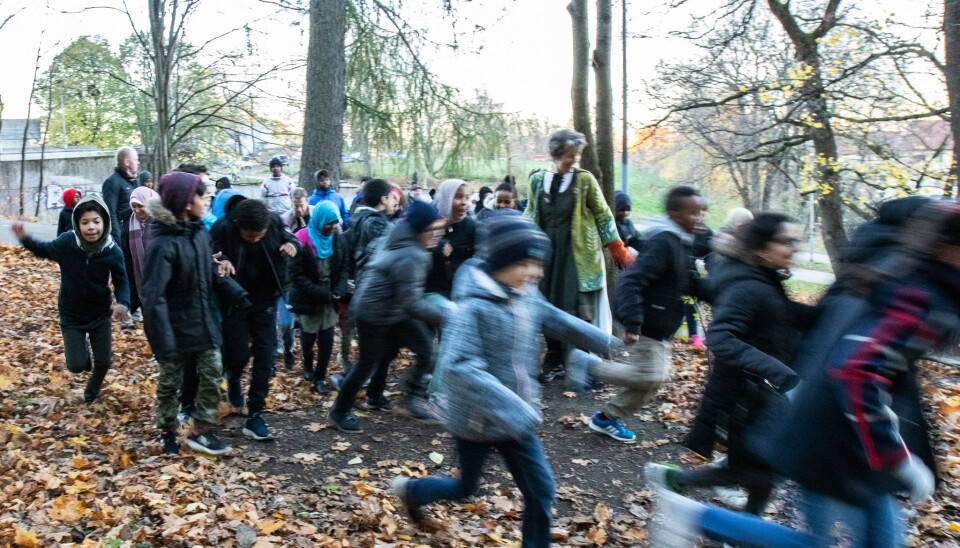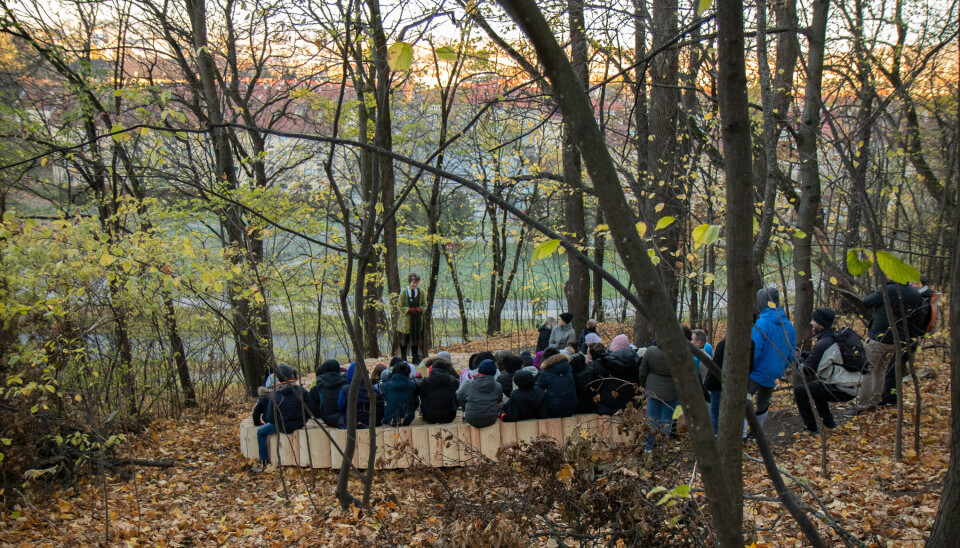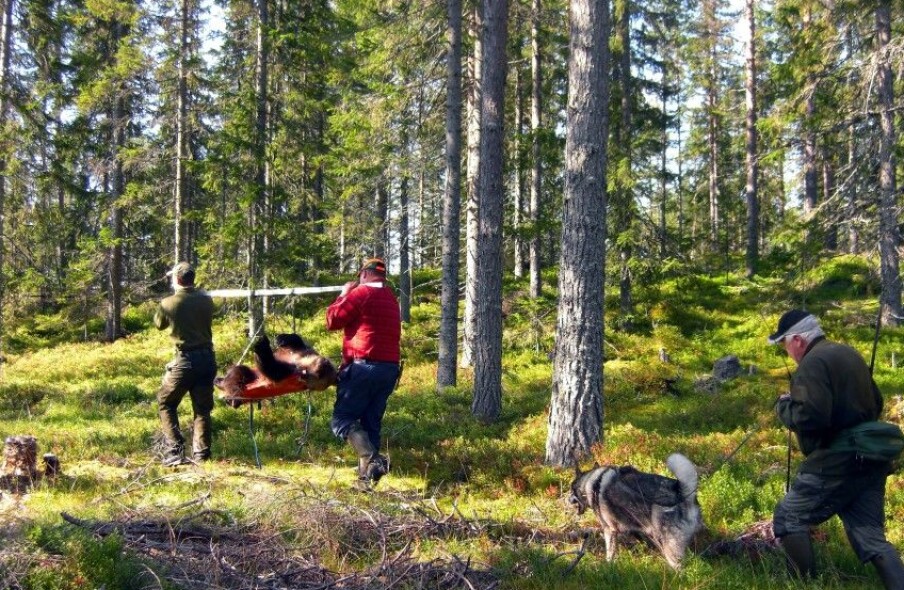This article is produced and financed by the Norwegian University of Life Sciences (NMBU) - read more

Children thrive in green neighbourhoods
Children living in neighbourhoods with green areas within 800 metres of their home are more active, both socially and physically, according to new research.
In the Ola Narr Woods in Tøyen, children chase each other through the shiny red autumn leaves. The woods have been there for a long time, but have not been used for play and activities. But today, the children are reclaiming this wooded area of Oslo East.
Landscape architects from Lala Tøyen and a member of the parents' working committee at Tøyen School, Ådne Obrestad, decided to clean up the woods that had been full of drug users’ needles and excrement from dogs and people. Now the children can enjoy themselves among the tall trees and run about freely.
That sounds like good news for the social life and health of the local children, according to a recent study.
Emma Charlott Andersson Nordbø, a PhD student at NMBU, has studied how the design of our neighbourhoods affects the health and wellbeing of Norwegian eight-year-olds.
The study shows that access to parks and green spaces within 800 metres of home makes it more likely that children will meet the minimum recommendations of health authorities of 60 minutes of daily physical activity.
"It’s very important that school areas, playgrounds, green areas and sports facilities are close to where children live," says Emma Nordbø. Children who live near these areas participate more in different types of activities and play more with friends and peers.
Eight-year-olds with an expanding world
"Children’s lives mostly consist of activities in and near the home," says Emma Nordbø, emphasising why the structure of the neighbourhood affects child health and well-being.
When children reach the age of eight, their world begins to expand.Their parents let them move around on their own more and more. They find interests outside the family and make their own friends. Those are some of the reasons why this study involved Norwegian eight-year-olds.
Emma Nordbø found information on the leisure activities and general health of eight-year-olds in the Mother and Child Cohort Study (MoBa) conducted by the Norwegian Institute of Public Health. Demographics and the mother's lifestyle habits were also taken into account.
With assistance from Statistics Norway, she linked the health data for each child in the MoBa survey to data from a population density map and the facilities and green areas within 800 and 5000 metres of the child's home. The facilities included schools, playgrounds, libraries, sports facilities and churches.
This gave her a basis for studying the children's health and well-being in relation to the structure of their neighbourhood.

More social spaces = a more active social life
In addition to being important for physical activity, playgrounds and sports facilities within 800 metres of children’s homes were shown to have a positive effect on their social life. Previous research also supports this: the few existing studies of the association between children's social life and built-up surroundings show that children spend less time with friends and peers in areas with limited facilities.
“In the more built-up areas, meeting places for children, such as playgrounds, sports facilities and other social settings, are more accessible. This enables children to meet friends more often, because it’s easy to get out and go to the local playground where other children play,” says Emma Nordbø.
This also applies to adults: An NMBU study on adults’ social relations in urban areas showed that city dwellers were happier with their social life than people who lived in parts of the Oslo region with scattered population.Emma Nordbø's study shows that the same principle applies to children: they are more socially active in moderately densely populated areas than in thinly populated areas. This may be precisely because their meeting places are closer to home.
Traffic limits physical activity
Proximity to playgrounds, sports facilities and schools is also important for children's participation in organised activities, such as sports, music and leisure clubs. Schools are particularly important venues for activities for many children, since in Norway organised activities outside school hours generally take place on school premises.
But it must be safe around schools and other areas:
"Parents hesitate to let their children go out if there’s a lot of traffic and unsuitable infrastructure, such as a lack of paths for walking and cycling," says Emma. A related review has examined 127 international studies on the effects of different types of built-up environments on participation in activities of children and adolescents.
The review comes to a clear conclusion: in neighbourhoods with safe roads, i.e. good security and little traffic, children and adolescents are more physically active.
"The findings of these studies are probably also applicable to parents of Norwegian children. In such situations, parents prefer to drive their children to school or other recreational activities,” she points out. Driving can quickly become a barrier to participation, and children do not get the chance to walk or cycle, which would have provided regular exercise.
At the same time, parents’ driving can lead to a vicious circle: more cars are on the roads, leading to more dangerous traffic, so that even fewer parents let their children walk or cycle to school.
But less traffic, combined with other safety measures, can break the vicious circle.
Lifelong improved quality of life
Previous research shows that children who are sociable, physically active and take part in organised activities do better at school and in higher education. Adults who have been active as children also report better mental health and greater life satisfaction.
And the children in the Ola Narr Woods are clearly satisfied with life. With a cinnamon bun in one hand and a twig in the other, they alternate between running around in the autumn leaves and taking a bite of their delicious buns.In true community spirit, the local bakery Skatten has provided fresh buns for the opening of the campsite, while the Sámi Kindergarten contributed a yoik, the traditional Sámi form of singing. Now it is up to the rest of the neighbourhood to rediscover the old woods.


































